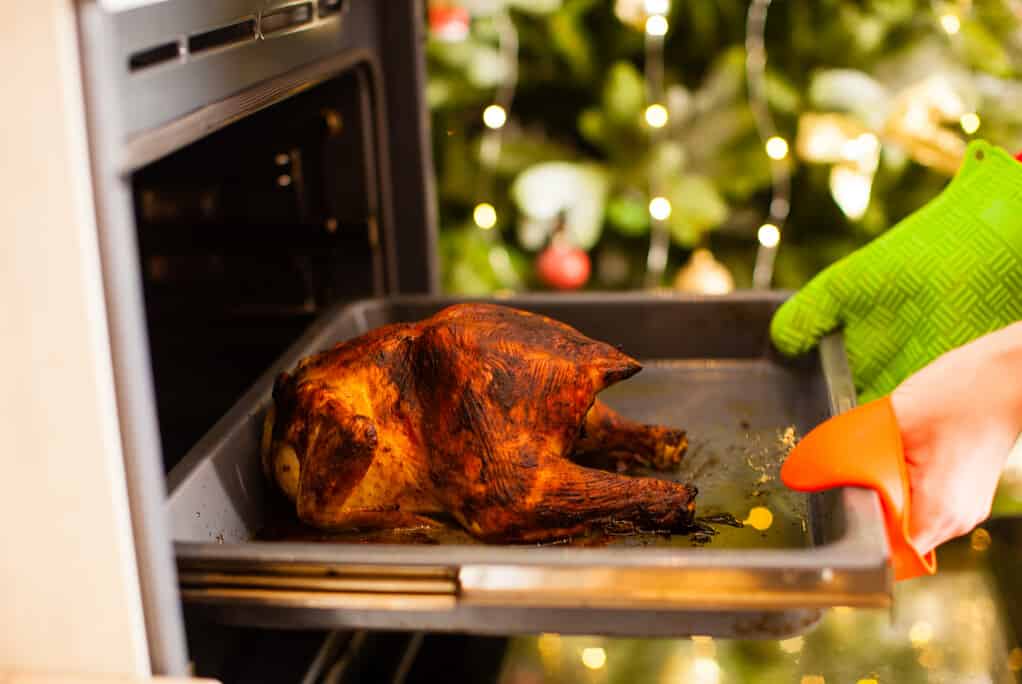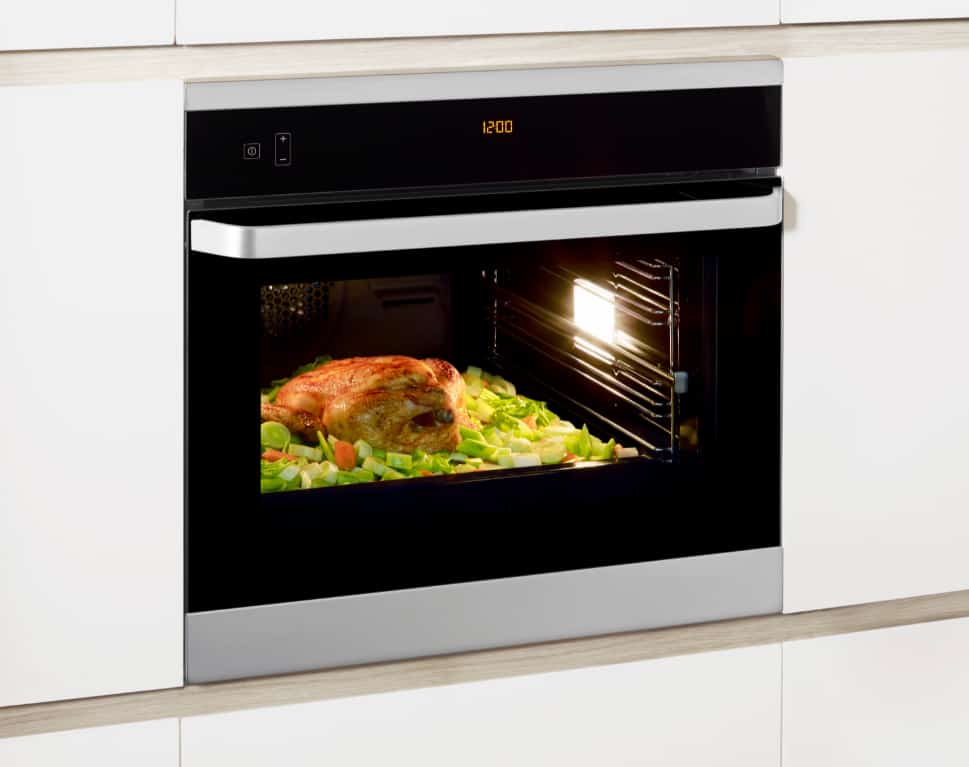Cooking a turkey seems easy enough, but it can be a hurdle for even the most experienced home chefs. You must ensure a safe internal temperature, a reasonable cooking time, and maintain moisture. All while maintaining a crispy skin.
Finding the right oven temperature for your turkey is paramount in getting a tasty outcome.
Should you cook your turkey at 325 degrees F (165 Celsius) or 350 degrees F (177 Celsius)? The answer is, it depends on the size of the turkey. Turkeys that are less than 12 pounds should be cooked at 325 degrees F (165 Celsius). Turkeys weighing 12 pounds or more should be cooked at 350 degrees F (177 Celsius).
Cooking a smaller turkey at 325 degrees F will help maintain its moisture, while giving a crispy skin. The smaller turkey will need to be cooked for 15 minutes per pound at 325 degrees F (165 Celsius).
Baking larger turkeys at 350 degrees F (177 Celsius) will help them finish faster without drying them out, give them an attractive golden brown skin, and a meatier taste. At this temperature, the turkey will take about 15 minutes per pound.
While you can cook larger turkeys at the lower temperature of 325 degrees F (165 Celsius), they will be super juicy, but may not have the crispy skin many folks desire, and will take much longer. That is simply a matter of your family’s taste.
It’s important to remember that although these are the general rules, there are exceptions. There are many factors that can affect the cooking time and temperature you should use (more on that later). But, the most important factor in ensuring a well-cooked turkey is the internal temperature.
Regardless of its size, the turkey needs to reach an internal temperature of 165 degrees F (74 Celsius). This is the safety standard set by the USDA. Investing in a good thermometer (especially at Thanksgiving) is always a good idea.
Check the temperature at the 45-minute mark and again when you’ve estimated the Turkey should be done. If it’s reached 160 degrees F (71 Celsius), you can remove the turkey and let it rest for at least 20 minutes (longer for large birds).
The turkey will continue to cook during this time and should easily reach the desired temperature. Just check one final time before carving.You’ll also want to piece the thigh or breast with the thermometer, as those parts take the longest to cook.
Should You Cook Your Turkey At 400 Degrees F?

Some people swear by this temperature. They say it reduces cooking time and makes the skin nice and crispy.
If you’ve ever seen the film Christmas Vacation, you’ll know why cooking your turkey at 400 degrees F (204 Celsius) is not recommended. The scene where the turkey is carved and there’s no meat inside serves as a warning to us all, not to overcook or overheat a turkey.
Anything above 350 degrees F (176 Celsius) puts you in danger of having a very dry turkey. There’s also the risk of the skin being done long before the meat. By the time the meat is done, you’re likely to have inedible skin.
It may take longer, but cooking the turkey at lower temperatures will make for an evenly cooked bird. At the end of the day, it’s really a personal preference. Roasting a turkey slowly, at a lower temperature, will ensure it keeps its inner moisture while having just enough crispness outside.
A temperature of 400 degrees F (176 Celsius) will get you out of the kitchen quicker, it may also clear the table just as quickly.
What Factors Can Affect The Cooking Time Of Your Turkey?

As promised, there are many things that can cause your turkey (regardless of size) to take longer to cook. You may even be forced to do the unthinkable – turn up the temperature!
The first thing is, if you’re putting a partially defrosted bird in the oven. It will take much longer and may cook unevenly. It’s important to completely defrost the turkey before putting it in the oven.
Transfer Tom to the fridge 1 to 3 days before cooking (depending on its size).
The next big factor is if the turkey is stuffed. Though stuffing is not as popular as it used to be, (the USDA does not recommend it due to foodborne illness) the turkey could take up to 10 to 25 minutes more a pound if you stuff it. Other reasons your turkey may take longer to cook include:
- the oven cooks unevenly (more common in older ovens)
- dark roasting pans cook faster than lighter, shiny ones
- the oven’s temperature may not be accurate
- covering the top of the turkey in foil will cause it to take longer
- using roasting pan lids will make it cook faster
- the position of the oven rack may cause the turkey to cook unevenly
- the turkey and/or the pan may be too large for the oven, blocking circulation of heat
- cooking other dishes in the oven at the same time will slow cooking
- continuously opening the door to baste the turkey
- placing the turkey breast side down will make it cook faster
You may be wondering, “how do I baste my turkey without opening the door?” The answer is, you don’t. Many chef experiments have proven that basting does nothing but make the skin more flavorful. It does not make the meat juicer.
If you want unbelievably moist and tender meat, try brining the turkey. It will make the turkey juicier than basting ever did and no unnecessary heat will escape. Ensuring Tom is done in a timely manner.







